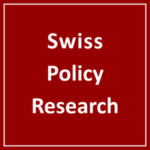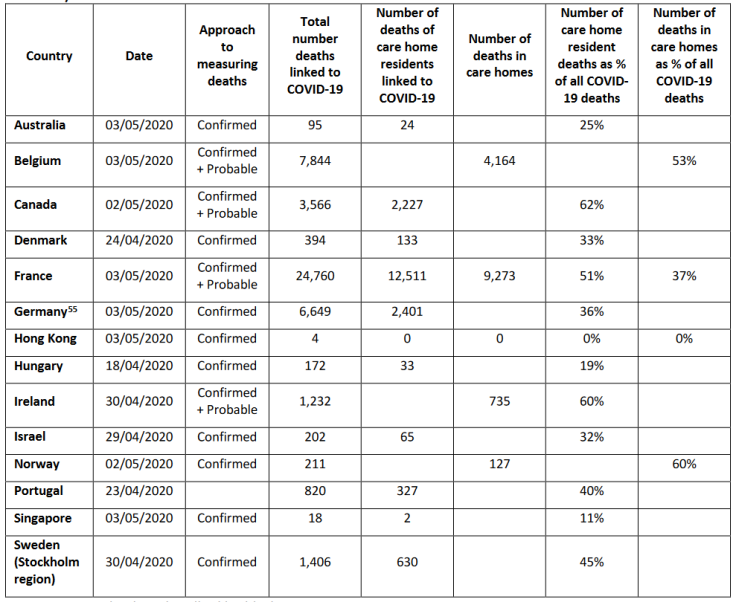Studies on COVID-19 Lethality
COVID19 - CORONAVIRUS, 25 May 2020
Swiss Policy Research - TRANSCEND Media Service
20 May 2020 – Facts on Covid-19
1) Covid-19 infection fatality rates (IFR) based on antibody studies
Population-based antibody seroprevalence studies.
| Country | Published | Population | IFR (%) | Source |
| Germany | May 4 | Heinsberg Cluster | <0.36¹ | Study |
| Iran | May 1 | Guilan province | <0.12 | Study |
| USA | April 30 | Santa Clara County | 0.17 | Study |
| Denmark | April 28 | Blood donors (<70y) | 0.08 | Study |
| USA | April 24 | Miami-Dade County | 0.18² | Report |
| USA | April 21 | Los Angeles County | <0.20 | Study |
1) The adjusted IFR is 0.278% (see page 9 of study); 2) Based on 300 deaths.
2) Covid-19 infection fatality rates based on controlled PCR studies
Controlled PCR studies in population subgroups.
| Country | Date | Population | IFR (%) | Source |
| USA | May 10 | MLB employees | 0.00 | Report |
| France | May 10 | Aircraft carrier | 0.00 | Report |
| USA | May 10 | Aircraft carrier | 0.09 | Report |
| USA | May 1 | Tennessee prison | 0.00 | Report |
| Italy¹ | April 28 | Health workers | 0.30 | Study |
| USA | April 17 | Boston homeless | 0.00 | Report |
| USA | April 17 | Boston blood donors | 0.00 | Report |
| Greece | April 16 | Repatriations | 0.00 | Study |
| USA | April 13 | NYC pregnant women | 0.00 | Study |

3) Covid-19 infection fatality rates based on models
Covid-19 IFR based on epidemiological models or predictions. These values are often higher than the actual values based on serological antibody studies (see above).
| Country | Published | Population | IFR (%) | Source |
| France | May 13 | France | 0.70 | Study |
| Switzerland | May 11 | Switzerland | 0.40 | Study |
| UK | May 7 | UK | 0.08¹ | Study |
| France | May 7 | France | 0.80² | Study |
| Global | May 5 | Global | 0.17 | Study |
| India | May 3 | India | 0.41 | Study |
| Italy USA |
April 20 | Lombardia New York City |
>0.84 >0.50 |
Study |
| China | March 30 | Mainland China | 0.66 | Study |
| Ship | April 17 | Diamond Princess | 0.13³ | Study |
| China | March 13 | Wuhan city | 0.12 | Study |
| China | March 9 | Mainland China | 0.50 | Study |
1) Based on 29% prevalence and 50,000 deaths; 2) The IFR is 0.50 excluding nursing homes; 3) Age-adjusted IFR based on US population.

4) Additional antibody and PCR studies
These studies typically determine the actual prevalence of recent or current Covid-19 infections in a population. In most cases, they find that Covid-19 is much more widespread than previously assumed, with most people showing no or only mild symptoms.
| Country | Published | Population | Prev. | Factor | Source |
| USA | May 15 | Boston | 12.5% | 8x | Report |
| Czech Rep. | May 15 | South Bohemia | 5% | 10x | Report |
| Spain | May 13 | Spain Madrid |
5% 11.3% |
10x | Study |
| UK | May 8 | UK | 29% | 200x | Study |
| Switzerland | May 6 | Geneva | 9.7% | 10x | Study |
| Global | May 5 | < 65 years old | Study | ||
| Japan | May 5 | Kobe City | 2.7% | 396x | Study |
| USA | May 2 | New York State New York City |
12.3% 19.9% |
Report | |
| Spain | May 2 | Health workers | 11.2% | Study | |
| Netherlands | April 29 | Blood donors | 2.7% | Study | |
| France | April 23 | Northern France | 3% | Study | |
| USA | April 19 | Chelsea MA | 32% | 16x | Report |
| Iceland | April 14 | Iceland (PCR) | 0.8% | Study |
5) Median age of Covid-19 deaths per country
Half of all deaths were below, half were above the median age.
| Country | Median age |
Source |
| Austria | 80+ years | EMS |
| England | 80+ years | NHS |
| France | 84 years | SPF |
| Germany | 82 years | RKI |
| Italy | 81 years | ISS |
| Spain | ~82 years | MDS |
| Sweden | 86 years | FOHM |
| Switzerland | 84 years | BAG |
| USA | ~80 years | CDC |

7) Hospitalization rate
Initial estimates based on Chinese data assumed a very high 20% hospitalization rate, which led to the strategy of ‘flattening the curve’ to avoid overburdening hospitals. However, population-based antibody studies (see above) have since shown that actual hospitalization rates are close to 1%, which is within the range of hospitalization rates for influenza (1 to 2%).
The US CDC found that Covid-19 hospitalization rates for people aged 65 and over are “within ranges of influenza hospitalization rates”, with rates slightly higher for people aged 18 to 64 and “much lower” (compared to influenza) for people under 18.
In local hotspots like New York City, the overall hospitalization rate based on antibody studies is about 2.5% (19.9% or 1.7 million people with antibodies and 43,000 hospitalizations by May 2), which is somewhat above a severe wave of influenza.
The much lower than expected hospitalization rate may explain why most Covid-19 ‘field hospitals’ even in hard-hit countries like the US, the UK and China remained largely empty.
8) Percentage of Covid-19 deaths in care homes per country
In many countries, deaths in care homes account for 30 to 60% of all additional deaths.
Source: Mortality associated with COVID-19 outbreaks in care homes (LTC Covid, May 3, 2020)
9) Development of the epidemic
Even in countries without a lockdown, the epidemic reached its peak within a few weeks of the outbreak. However, many media showed cumulative deaths per day of report (left) instead of daily deaths per day of death (right), falsely implying an ever escalating situation.

See also
- Additional Covid-19 Antibody Serological Studies (Dr. Henrik Jarlov)
- Global Covid-19 Case Fatality Rates (Oxford Center for Evidence-Based Medicine)
- Rate of positive Covid-19 tests per country over time (SPR)
Main article: Facts on Covid-19
Tags: COVID-19, China, Community, Compassion, Coronavirus, Economy, Empathy, Environment, Health, Lockdown, Pandemic, Public Health, Research, Science, Science and Medicine, Semen, Sharing, Sperm, Trade, United Nations, WHO, World
DISCLAIMER: The statements, views and opinions expressed in pieces republished here are solely those of the authors and do not necessarily represent those of TMS. In accordance with title 17 U.S.C. section 107, this material is distributed without profit to those who have expressed a prior interest in receiving the included information for research and educational purposes. TMS has no affiliation whatsoever with the originator of this article nor is TMS endorsed or sponsored by the originator. “GO TO ORIGINAL” links are provided as a convenience to our readers and allow for verification of authenticity. However, as originating pages are often updated by their originating host sites, the versions posted may not match the versions our readers view when clicking the “GO TO ORIGINAL” links. This site contains copyrighted material the use of which has not always been specifically authorized by the copyright owner. We are making such material available in our efforts to advance understanding of environmental, political, human rights, economic, democracy, scientific, and social justice issues, etc. We believe this constitutes a ‘fair use’ of any such copyrighted material as provided for in section 107 of the US Copyright Law. In accordance with Title 17 U.S.C. Section 107, the material on this site is distributed without profit to those who have expressed a prior interest in receiving the included information for research and educational purposes. For more information go to: http://www.law.cornell.edu/uscode/17/107.shtml. If you wish to use copyrighted material from this site for purposes of your own that go beyond ‘fair use’, you must obtain permission from the copyright owner.
Read more
Click here to go to the current weekly digest or pick another article:
COVID19 - CORONAVIRUS:

